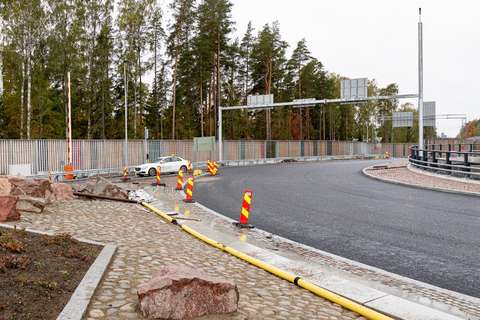New procurement solution uses natural stone in infrastructure construction

In Espoo, infrastructure is mainly built by purchasing fixed-price contracts, where the contract includes the work performance as well as the construction site machinery and materials used, such as paving stones. A market dialogue with stone suppliers was used to find a new alternative to purchase low-emission granite stone for the Public Works Department.
The procurement options for paving stones were investigated to improve the availability of paving stones and as part of the measures of the Green Deal on emission-free work sites. Stone suppliers also expressed a wish to find a new procurement solution, as it is important for them to have a steady production load all year round, including in winter when there are few orders for paving stones due to the lack of infrastructure construction.
“The availability challenges have arisen from the frequently short time windows of the city’s infrastructure contracts from the call for tenders to the construction site,” says Hannu Lehtikankare, Manager of Construction Management. The contractor has very little time to acquire the stones for the contract after winning the tender. Correspondingly, the stone supplier only has a short time to manufacture the stone products.
The production chain of natural stone from quarrying to various stone products requires time, capital and, above all, knowledge of what kind of stone products will be needed in future street works. When the predictability of production is good, the stone contractor can offer the city cost benefits compared to the usual procurement method. Lehtikankare points out that cost savings on stone material will promote the use of natural stone in infrastructure construction, if more of it can be acquired with the same budget.
Pilot procurement puts kerbstones out to tender
Market dialogue took place both in a joint event and in bilateral discussions between companies and the city. Discussion of the stone grades/colours, quarries, stocks and production processes resulted in a decision to focus on kerbstones in the pilot procurement.
The procurement notice was published in Hilma on 24 November 2023. The call for tenders divided the procurement into two subsets: red and brown-toned stones and grey and light-toned stones. Tenderers could tender for both colour sets or just one.
Four stone supplies submitted tenders, which all complied with the call for tenders. The procurement contract, worth approximately EUR 0.5 million, is valid during 2024–2025. The 7 km of kerbstones purchased under the contract corresponds to approximately 40% of the annual amount used by Espoo.
In the procurement, the tenderer was required to calculate the production and transport emissions of paving materials using a ready-made Excel calculator provided with the call for tenders. The maximum emissions permitted were limited to 200 kg CO2e per ton of stone in order for the tender to be eligible. The benchmark is the emissions of stone imported from China, which exceed 700 kg CO2e per ton of stone.
The maximum level of emissions was assessed using the EPD environmental statement, which is a standardised method based on a life-cycle assessment to present the product’s environmental impacts over its entire lifespan from the procurement of raw materials to the final disposal of the product.
Low-emission natural stone has short transport distances
The majority of emissions in natural stone construction consist of transport from the extraction site to the stone product production site and from there to the construction site. The Act on Public Procurement and Concession Contracts allows the use of the environmental product declaration (EPD) as a procurement criterion, which promotes not only emission savings but also domestic stone industry with short transport distances.
The use of granite also supports resource efficiency with a long life-cycle, as the natural stone is durable and reusable.
Procurement: a key tool for achieving climate goals
The implementation of sustainable development and the promotion of the circular economy are strongly present in the city’s strategy, the Espoo Story, and construction sites have also committed to the goals. The Green Deal on emission-free work sites is a joint development framework for public procurement officers to reduce emissions. Emissions from material transport in infrastructure construction can be reduced by using a minimum emission criterion in procurement contracts and framework agreements.
“In addition to promoting low-carbon solutions, the pilot procurement of natural stones promotes the circular economy and the ecological and social sustainability goals of the City of Espoo,” says Iina Kallio, Project Planner at the Public Works Department. “In the future, the carbon footprint of products will become an increasingly dominant factor in procurement alongside costs,” says Kallio.
If the pilot procurement also proves to be a workable solution in practice, the Public Works Department will consider a similar solution for procurements of stones other than kerbstones, such as square and rectangular setts used for paving streets and granite slabs.